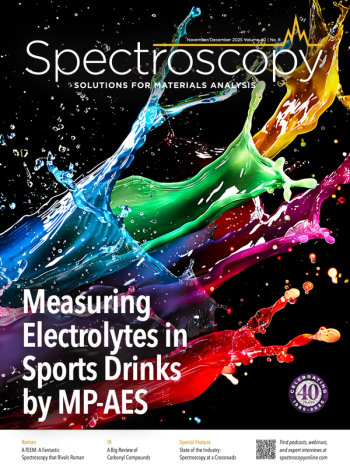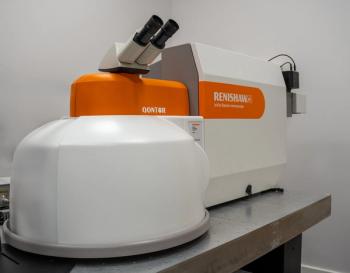Key Points
- The study used inductively coupled plasma–optical emission spectroscopy (ICP-OES) to accurately measure ten metals in pet food samples, with stringent quality control measures ensuring reliability.
- Existing U.S. FDA and FEDIAF standards primarily address acute toxicity and fail to account for chronic, low-level exposure to metals in pets, highlighting the need for updated, species-specific regulatory limits.
- The study calls for batch-level metal testing, safer formulations, transparent labeling, and revised regulatory limits.
Because the United Arab Emirates is seeing an increase in pet ownership, the quality of both dry and wet pet food is undergoing greater scrutiny to ensure its safety and efficacy. Lucy Semerjian, who works as a Chair and Associate Professor in the Department of Environmental Health Science at the University of Sharjah in Sharjah, United Arab Emirates, recently explored this topic in a recent paper (1,2).
Part I of our conversation with Semerjian focused on what her study found regarding the differences in metal content between wet and dry pet foods (3). In Part II, Semerjian discusses how inductively coupled plasma–optical emission spectroscopy (ICP-OES) was deployed in the study, as well as what the results mean for current regulators and manufacturers.
What role does ICP-OES play in ensuring the reliability of your findings, and what were some of the challenges in preparing and analyzing the pet food samples using this technique?
The prepared samples were analyzed for Al, Cd, Co, Cr, Cu, Fe, Mn, Ni, Pb, and Zn using ICP-OES, which allows for the simultaneous determination of multiple metals. Calibration curves were established using a blank and five operational standards with a regression coefficient of at least 0.999 to ensure linearity and precision. The limits of detection were estimated from blank analyses (5 replicates) and determined as three times the standard deviation of blank signals divided by the slope of the calibration curve for each element. Additionally, for quality control during ICP-OES analysis of metals, blanks were run with each batch of samples to monitor contamination of used reagents, and a standard was re-run for every 10 samples analyzed as a calibration check. The prepared samples were run in triplicate, and relative standard deviations among replicates were always less than 15%. Quality control and quality assurance were further maintained by use of a certified plasma emission ICP multielement standard, Ultratrace ppb trace-analysis grade reagents, ultrapure ICP-OES grade water, and metal-free acid-soaked glassware. No major challenges were encountered during sample preparation and analysis, yet the absence of mercury analysis remains a study limitation.
How well do current United States Food and Drug Administration (U.S. FDA) and European Pet Food Industry Federation (FEDIAF) regulations account for chronic exposure to low levels of metals in pet food, and do you believe updated regulatory limits are needed based on your findings?
The current regulatory frameworks by the U.S. FDA and FEDIAF provide foundational safety standards; however, they have not fully evolved to address chronic exposure to low levels of heavy metals in pet food. The FDA issues guidance levels or tolerances, primarily based on acute toxicity. FEDIAF provides nutritional guidelines, including maximum permissible levels for certain metals (for example, zinc, copper, selenium, and arsenic); these limits are nutritional or performance-based, and they do not always reflect toxicological insights on long-term low-dose exposure. Neither agency adequately models the effects of cumulative exposure to low levels of toxic metals, especially in pets with smaller body mass or compromised organ functions. Furthermore, existing thresholds are often historical and based on livestock or human data, and not companion animals, which have different metabolisms, life spans, and consumption patterns. Thus, updated limits are recommended to be inclusive for long-term organ toxicity, compounded exposure across multiple food products and treats, and vulnerable pet populations.
Given the variability in metal content across different brands and food types, what measures would you recommend manufacturers and regulators implement to ensure greater consistency and safety in pet food?
Implementing systematic measures by manufacturers and regulators addressing both ingredient-level risks and industry-wide practices is essential to ensure long-term pet food safety.
Recommendations to manufacturers may include (1) batch-level testing for metals, especially for high-risk ingredients such as organ meats, fish, and plant-based fillers, (2) standardized ingredient sourcing from regions with low environmental contamination, (3) use of safer formulations by minimizing use of ingredients known to accumulate metals such as liver and bone meal, (4) transparent labeling and disclosure of metal content ranges, and (5) internal quality control training tailored to metal contamination risks.
Regulatory recommendations include revising maximum allowable metal limits based on chronic exposure risks, as well as including life-stage-specific thresholds; making metal testing a requirement for market approval or import clearance; aligning pet food metal safety limits across regions to reduce regulatory gaps; and offering incentives and support for compliance.
How can veterinary professionals and pet owners use the findings from this study to make more informed decisions about pet nutrition and health monitoring?
Veterinary professionals may integrate dietary exposure into their clinical assessments, adjust nutritional recommendations, guide pet owners to promote dietary rotation and diversification, advocate for screening for metal-related biomarkers in high-risk cases or when chronic exposure is suspected, and educate clients on reading pet food labels.
Pet owners may use mixed feeding strategies, rotating between protein sources and limiting use of organ-based treats like liver or fish meal, consult a veterinarian to choose diets tailored to their pet’s age, health status, and lifestyle, and monitor their pets for any subtle health changes.
References
- Semerjian, L.; Alsuwaidi, S. M.; Alhosani, M. K.; et al. Quantification of Metals in Commercially Available Wet and Dry Cat Food in United Arab Emirates. J. Food Comp. Anal. 2025, 140, 107249. DOI: 10.1016/j.jfca.2025.107249
- University of Sharjah, Dr. Lucy Semerjian. Sharjah.ac.ae. Available at: https://www.sharjah.ac.ae/Academics/Faculty-And-Staff/Lucy-Semerjian (accessed 2025-06-10).
- Wetzel, W. Pet Food in the United Arab Emirates: An Interview with Lucy Semerjian. Spectroscopy. Available at: https://www.spectroscopyonline.com/view/pet-food-in-the-united-arab-emirates-an-interview-with-lucy-semerjian (accessed 2025-06-10).




